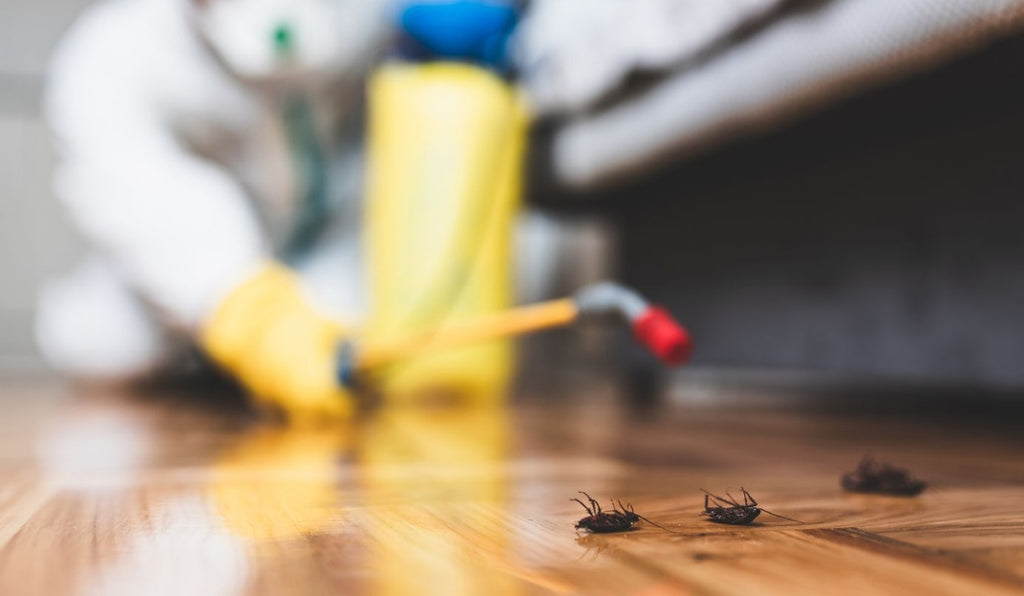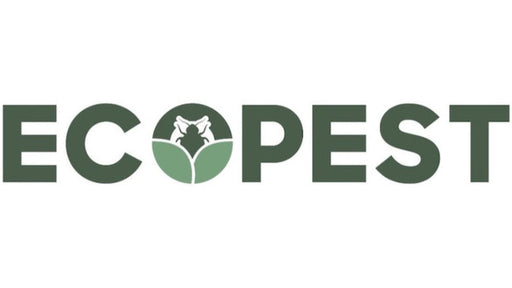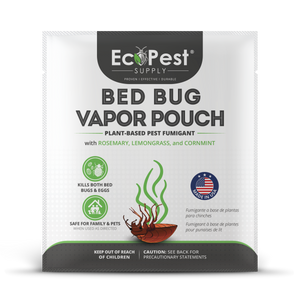
What Are Bed Bugs?
Bed bugs are one of the most annoying pests to have in your house.
These little, reddish-brown insects are nocturnal and feed on human blood, causing pain and restless nights. They spread swiftly and are difficult to eradicate once they have infested your house.
Thankfully, there are various bed bug pest control solutions available to efficiently remove these pests. In this post, we'll look at the five most effective bed bug pest control methods you should try.
Understanding the Factors that Draw Bed Bugs to Your Home
Warmth, carbon dioxide, and the odor of human sweat all attract bed bugs. They can easily infiltrate your house via clothing, baggage, or even your pet. They can quickly spread throughout your home once inside.
The bed bug problem is a serious one that demands immediate treatment.
Therefore, taking appropriate measures to control bed bugs as soon as possible is essential.

5 Effective Bed Bug Pest Control Methods
Method 1: Heat Treatment
One of the most efficient bed bug pest control methods is heat treatment. High temperatures are used in this approach to destroy bed bugs and their eggs.
Heat treatment is exposing your home to temperatures ranging from 120 to 140 degrees Fahrenheit over a period of several hours. This high temperature kills bed bugs and their eggs, thereby ridding your house of bed bugs. Heat treatment works against bed bugs at all stages of growth so it’s one of the most effective methods to use.
Advantages and Disadvantages of Using Heat Treatment
The primary benefit of using heat treatment is that it is environmentally friendly and you don’t have to use hazardous chemicals. Moreover, heat treatment efficiently kills bed bugs at all phases of life, including eggs.
The biggest downside of using heat treatment is that it can be costly, and you might need to leave your house during the process. You must also ensure that your house is fully prepped prior to the treatment, which might take some time. But, if you are looking for eco-friendly and more affordable solutions to get rid of bed bugs consider investing in high-quality bed bug interceptors.
Tips for Preparing Your Home for Heat Treatment
Preparing your home for heat treatment is the most important step if you want to have a successful bed bug elimination.
Here are some pointers to help you get your home ready for heat treatment:
- Get rid of all the clutter in your home, including clothing, toys, and other objects.
- Remove all linen from your bed and wash it in hot water with bed bug-killing laundry additive
- Remove any pets and plants from the premises.
- Plug any gaps and openings in your home to keep bed bugs from escaping.
- Switch off all gas appliances, including your water heater.
Method 2: Insecticides
Another efficient bed bug pest control method is insecticides. There are various pesticides on the market that are particularly designed to kill bed bugs.
Insecticides come in a variety of forms, including sprays, powders, and liquids. The most often used pesticides for bed bug management include pyrethroids, neonicotinoids, and insect growth regulators.
How to Apply Insecticides Effectively and Safely?
In order to get the best results in bed bug pest control while limiting potential risks to human health and the environment, pesticides must be used correctly and safely.
These are some guidelines for applying pesticides securely and efficiently:
- Choose the right insecticide
- Wear protective gear
- Read and follow the label instructions
- Use the right equipment
- Treat all infested areas
- Monitor the results
- Consider hiring a professional

Potential Risks and Drawbacks of Using Insecticides
While pesticides can be helpful in controlling bed bugs, there are some risks and downsides to using them.
Here are some of the primary issues to consider while using pesticides to control bed bugs:
- Health risks: Insecticides are chemicals that, if not handled appropriately, can be detrimental to human health. If some pesticides are not handled and sprayed carefully, they might cause skin irritation, breathing difficulties, and other health concerns. Insecticides may be especially harmful to pregnant women, children, and pets.
- Environmental concerns: Insecticides can potentially have a severe impact on the environment, especially if they are not used according to label directions. Certain pesticides are hazardous to animals and beneficial insects, and they can pollute soil and water if not properly disposed of.
- Cost: Insecticides can be costly, especially when numerous doses are necessary to get the desired outcomes. Using a professional pest control company could prove more cost-effective in some situations than purchasing and spraying pesticides on your own.
Method 3: Diatomaceous Earth
Diatomaceous earth is a non-toxic natural substance that can be used to control bed bugs.
It is a fine powder formed from the fossilized remnants of small aquatic creatures known as diatoms. When bed bugs come into touch with diatomaceous earth, it can destroy their outer shell, causing them to dehydrate and die.
You will need the following items to apply diatomaceous earth for bed bug control:
- To apply the powder, use a duster or applicator
- To avoid breathing dust, wear a respirator mask
- Wear gloves to keep your skin from becoming irritated
Step-By-Step Instructions for Applying Diatomaceous Earth
- Vacuum - Begin by carefully vacuuming the area where diatomaceous earth will be applied. This will assist to eliminate any apparent bed bugs, eggs, or debris, allowing the powder to reach its intended target.
- Fill your duster with the DE powder - For correct dosing and application, make sure to follow the manufacturer's recommendations.
- Apply the DE powder - Apply the powder to cracks and crevices, baseboards, and furniture where bed bugs are likely to hide or migrate. Apply a thin, even layer to avoid oversaturating the area.
- Leave the powder for several hours - Wait for several hours or overnight before vacuuming away any residual powder. This allows the diatomaceous earth to do its job and ensures that any bed bugs that come into touch with the powder are killed.

Tips for Avoiding Inhalation and Skin Irritation
Diatomaceous earth is a fine powder that can be easily inhaled or cause skin irritation if necessary measures are not followed.
To avoid these problems, be sure to:
- Wear a protective mask while applying the powder
- Use gloves to prevent skin irritation
- Use a duster with a long nozzle applicator for more precision
- Avoid spreading the powder in locations where it might be readily disturbed, such as near fans or air vents.
Method 4: Chemical Treatments
Another common method for bed bug control is chemical treatment.
Chemical treatments come in a variety of forms, including residual insecticides, contact sprays, and aerosol foggers. These solutions can be successful in killing bed bugs, but they can also be hazardous if applied incorrectly.
-
Residual insecticides are chemicals that are applied to surfaces and are intended to be effective for several weeks or months after application. They can be used on baseboards, bed frames, and other surfaces where bed bugs could hide.
- Contact sprays, on the other hand, are intended to kill bed bugs on contact and are typically used in places where bed bugs can be seen, such as on bedding or furniture.
- Another sort of chemical treatment that can be used to kill bed bugs is aerosol foggers. These foggers spray an insecticide mist into the air, which can penetrate cracks and crevices and kill bed bugs hiding in hard-to-reach places. However, because they are ineffective at eliminating all bed bugs, they should only be used as part of an overall treatment plan.
Step-By-Step Instructions for Using Chemical Treatments Effectively
- Chose the right insecticide - Choose an insecticide based on the intensity of the infestation and the kind of surface to be treated.
- Follow the instructions - Read and carefully follow all label directions, including any safety precautions or warnings.
- Wear protection - Wear protective clothing and equipment, such as gloves, a mask, and eye protection.
- Start applying the solution - Begin by treating locations where bed bugs are most likely to hide, such as baseboards, cracks and crevices, and the bed frame.
- Give it time - Use the pesticide as directed on the label, being sure to fully cover all surfaces. Let the treatment thoroughly dry before returning to the area.

Method 5: Professional Pest Control
Bed bug infestations can become serious and difficult to eradicate on your own in some situations. In such cases, it is better to seek the assistance of a professional pest control company.
Professional pest control companies have access to sophisticated equipment and chemicals that are more effective than consumer alternatives. They also have a wealth of information and experience dealing with bed bug infestations, which may be beneficial in determining the cause of the problem and establishing a successful treatment strategy.
Services Offered by Professional Pest Control Companies
Professional pest control companies' services often involve a comprehensive survey of your property to determine the degree of the infestation and the areas impacted. The treatment strategy will then be tailored to your unique situation's requirements.
In addition to pesticides and other chemicals, this could include the use of specialist equipment such as heat treatment or fumigation.
Tips for Choosing a Reputable Pest Control Company
When selecting a professional pest control business, it is critical to conduct research and choose a reputable and experienced provider. Search for a business that is licensed, insured, and accredited by industry organizations. You can also ask friends and relatives for recommendations or read internet reviews to verify that you are selecting a reputable and trustworthy provider.
Cost Considerations and Potential Drawbacks of Professional Pest Control
Professional pest control can be more expensive than do-it-yourself approaches, but it may be required for serious infestations that require specialist treatment. While weighing your alternatives, it is critical to evaluate the expense of professional pest control as well as the advantages of good and timely bed bug removal.
One disadvantage of hiring a professional pest control company is that you might be required to leave your house during the treatment procedure, which may be difficult and annoying. You may also need to take extra steps to secure your personal possessions and reduce your chance of chemical exposure.
Conclusion
To summarize, bed bugs can be a nuisance and a health risk in your home, but there are efficient strategies for controlling and eliminating them.
Heat treatment, insecticides, diatomaceous earth, chemical treatments, and professional pest control are the five methods described in this article. Each approach has advantages and downsides, and it is critical to select the one that works best for your specific scenario.
Heat treatment is a successful and ecologically safe method of bed bug elimination, but it is costly and needs expert equipment. Insecticides can be useful, but they must be used carefully to minimize health hazards. Diatomaceous earth is a natural and harmless alternative, but it must be handled carefully to avoid inhalation or skin irritation. Chemical treatments can be beneficial, but they also pose health concerns and should only be used by trained professionals. Professional pest management is frequently required for serious infestations, but it may be costly and may necessitate numerous treatments.
To minimize health hazards and the spread of infestations, bed bug infestations must be addressed quickly and properly. Preventive steps such as washing bedding and cleaning on a regular basis can help lower the chance of infestations. If you discover bed bugs in your house, try one or more of the efficient pest control strategies outlined in this article.
Don't let bed bugs infest your home. Take immediate steps to control and remove them.
FAQs
How effective is pest control for bed bugs?
The efficiency of bed bug pest control is determined by a number of factors, including the degree of the infestation, the type of treatment used, and how thoroughly the treatment is carried out. Professional pest control procedures are often more successful than do-it-yourself alternatives, especially for severe infestations.
How do you get rid of bed bugs in a mattress?
Because bed bugs hide in small cracks and crevices, getting rid of them in a mattress can be difficult.
One successful way is to use a bed bug-resistant encasement to protect the mattress and keep bed bugs out. Vacuuming the mattress and surroundings can also aid in the elimination of bed bugs and their eggs. Heat treatments, such as putting the mattress in a hot dryer or using a portable steamer, can also be successful at getting rid of bed bugs. Chemical treatments are another option, but they should be used with caution to minimize exposure to potentially dangerous substances.
What attracts bed bugs?
Warmth, carbon dioxide, and human blood all attract bed bugs.
They often feed on human blood by piercing the skin with their mouthparts at night. Bed bugs are frequently discovered in places where people sleep or relax, such as beds, sofas, and chairs. They have also been discovered in clothing, luggage, and other goods that have come into touch with contaminated locations.
What smells do bed bugs stay away from?
While there are several scents that bed bugs dislike, there is no smell that entirely repels them. Lavender, tea tree oil, peppermint, and cinnamon are among the smells that may help discourage bed bugs. Nevertheless, these fragrances are unlikely to give comprehensive bed bug protection and should not be used as the only means of bed insect management, but rather as an addition to bed bug glue traps and interceptors.
What is the lifespan of a bed bug?
A bed bug's lifetime is determined by several conditions, including temperature, humidity, and food supply.
Under optimal conditions, bed bugs can survive for several months to a year. Female bed bugs have the ability to lay up to five eggs every day and up to 500 eggs throughout their lifespan. The eggs hatch in 6-10 days, and the nymphs must feed on blood before molting to the next stage. Before becoming fully fledged adults, bed bugs go through five molting phases.
Can you successfully get rid of bed bugs?
Yes, efficient pest control methods such as heat treatment, pesticides, diatomaceous earth, and professional pest management may be used to successfully eliminate bed bugs.
Bed bug infestations, on the other hand, can be difficult to remove, and it may require numerous treatments over time to entirely eradicate them. Bed bug infestations must be addressed quickly and completely to prevent them from spreading and causing other difficulties. Also, adopting preventative actions such as examining your house for bed bugs on a regular basis and avoiding bringing infested objects into your home will help prevent future infestations.

 Tamara Šikloši
Tamara Šikloši





